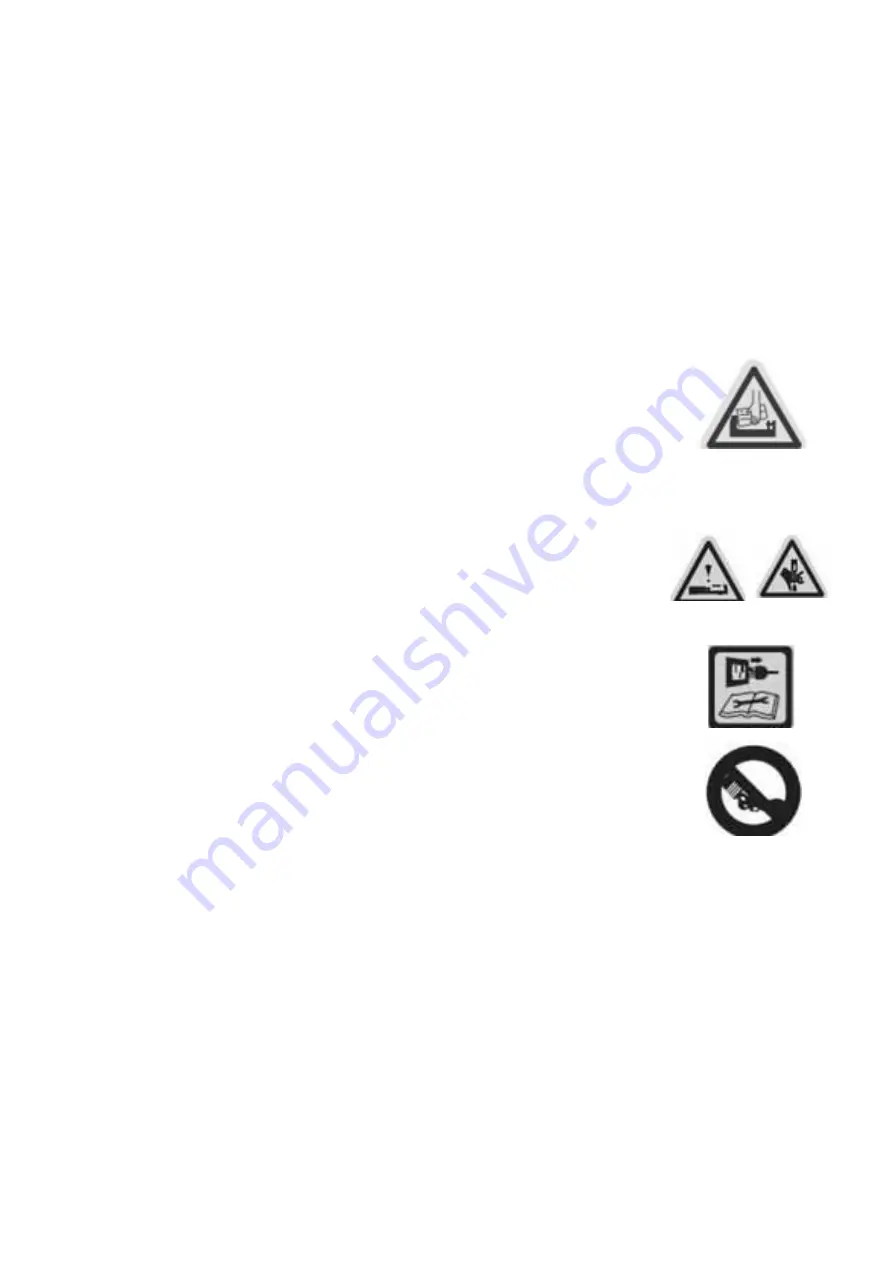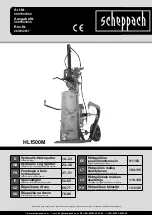
Page 4
USE OF THE LOG SPLITTER
•
Put the log splitter on a 60-70cm high, stable, flat and level work bench
where there is plenty of room. If possible use a special log splitter stand.
Bolt the log splitter to the work surface if it tends to walk, slip or slide. Keep
your work area clean and well-lit. Cluttered areas invite injuries. Do NOT
use the log splitter in wet or damp areas or expose it to rain. Do NOT use
in an area where fumes from paint, solvents or inflammable liquid pose a
potential hazard.
•
Make sure there are no nails or foreign objects in the logs to be split.
The ends of the logs must be cut square. Branches must be cut off flush
with the trunk.
•
Always pay full attention to the movement of the log pusher.
•
Keep your hands away from splits and cracks which open up in the wood –
they may close suddenly and cause injury. Do NOT attempt to remove
jammed logs with your hands.
•
The log splitter will do a better and safe
r
job at its designed pressure/rate.
Never try to split logs larger than those indicated in the specifications table.
This could be dangerous and may damage the machine. Never leave the log
splitter running
un
attended.
•
Always pay full attention to the movement of the log pusher. Do not
attempt to load the log until the log pusher has stopped. Keep your
hands away from all moving parts.
•
Unplug when not in use, before making adjustments, changing parts,
cleaning or working on the log splitter.
•
Dispose of used oil responsibly. Take to an authorised collection point –
refer to your local council for details. Do NOT discharge into drains,
soil or water.
APPLICATION CONDITIONS
The log splitter is for domestic
use. It is designed for operation under ambient temperatures
b5°C and 40°C and for installation at altitudes of no more than 1000m above MSL.
The surrounding humidity should be less than 50% at 40°C. It can be stored or transported under
ambient temperatures between -25°C and 55°C.
Summary of Contents for THLS-C
Page 12: ......



















